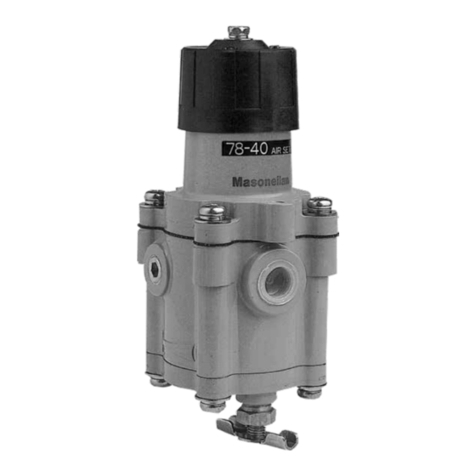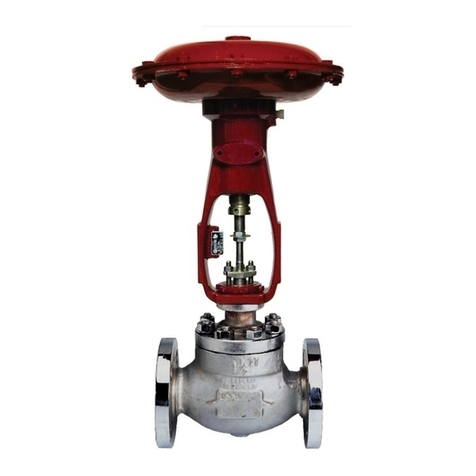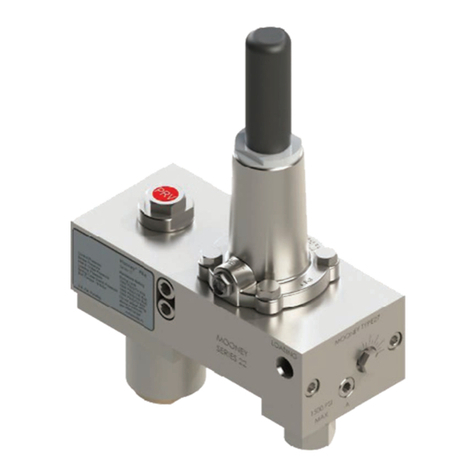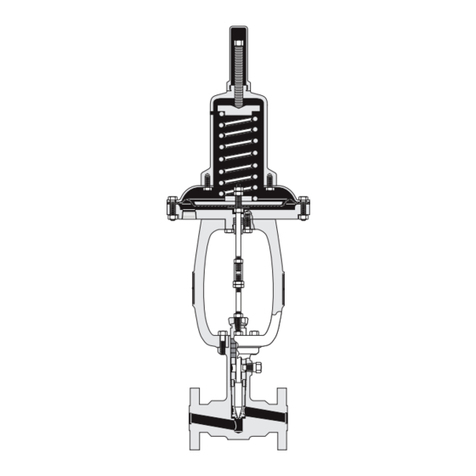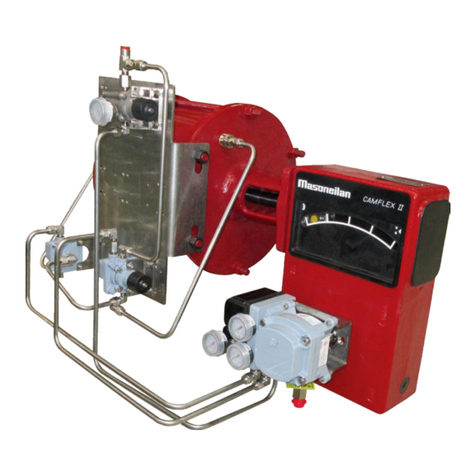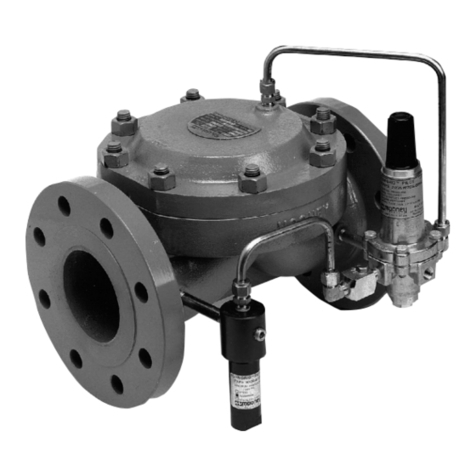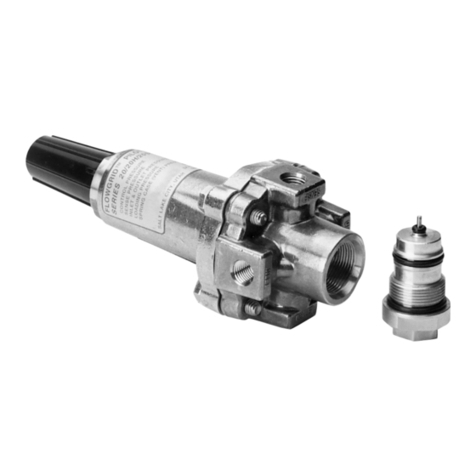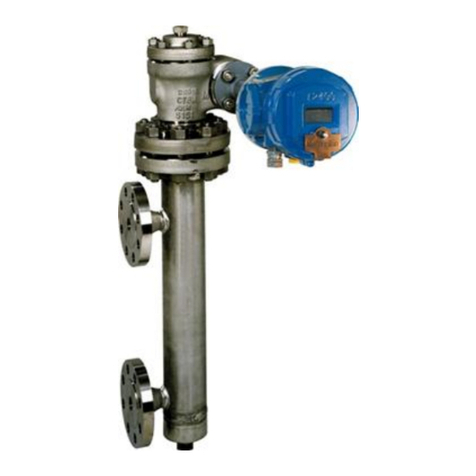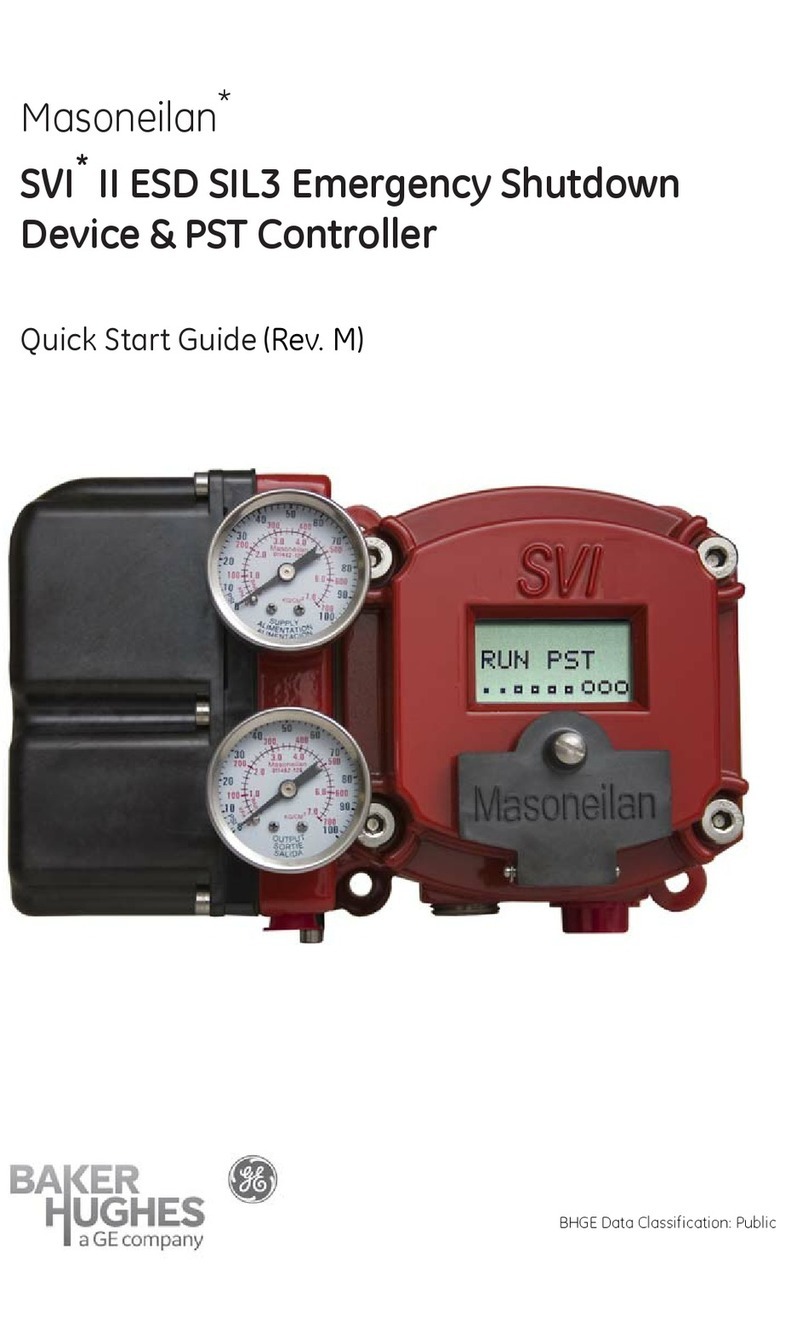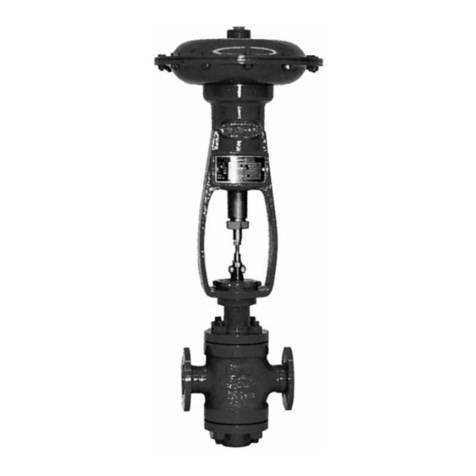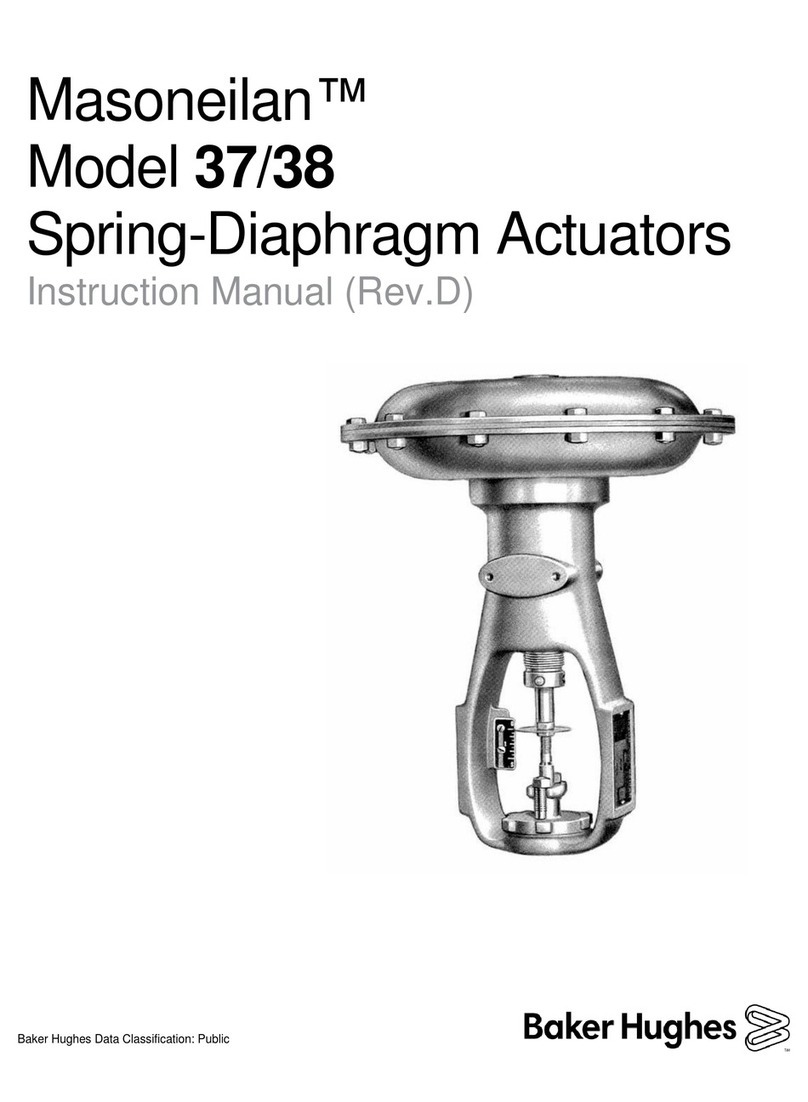
Copyright 2020 Baker Hughes Company. All rights reserved.
Do not over-tighten. Do not strike seat ring lugs di-
rectly. This could distort the seat ring resulting in seat
leakage.
Donottightennutstonaltorquespecicationsat
this time. The bonnet is used temporarily for guiding
purposes only.
Note: As an alternative, drill a hole through a flat steel
plate and fasten to the plug stem using two locknuts.
contact, and rotate the stem in short oscillating strokes
Note: The plug should be lifted and turned 90° each
time before repeating Step (9). This intermittent lifting
is required to keep the plug and seat rings concentric
during lapping.
Do not remove seat ring.
7.4 Pinning
Note: While pinning is being performed, care must be taken
not to damage the seating surface and plug guides.
Note: If it is necessary to drill out the pin, a drill
somewhat smaller than the pin should be used and the
remainder of the pin driven out.
Note: The area of the plug stem marked X in Figure 4
serves as a guide and must be checked to ensure a
close fit in the valve plug.
Note: This can be checked by measuring the depth of
the pilot recess in the plug (X in Figure 4), and making a
reference mark on the stem the same distance from the
thread. When properly assembled, the reference mark
should be flush with the end of the guide section.
drill, drill the stem using the hole in the plug as a guide.
on it and press into the hole.
Note: The pin must be recessed approximately 1/16”
below the plug guide surface.
Note: The plug should be placed in a collet with the plug
guide against it and the plug should be struck.
7.5 Packing Box
Valve must be isolated and the pressure vented be-
fore performing packing box maintenance.
7.5.1 Carbon/PTFE Rings (Standard)
Note: The Carbon/PTFE packing rings have a skive cut
allowing packing replacement without disconnecting the
plug stem from the actuator connector or actuator stem.
valve stem.
Note: These parts may be secured using tape or wire to
keep them out of the way before proceeding.

